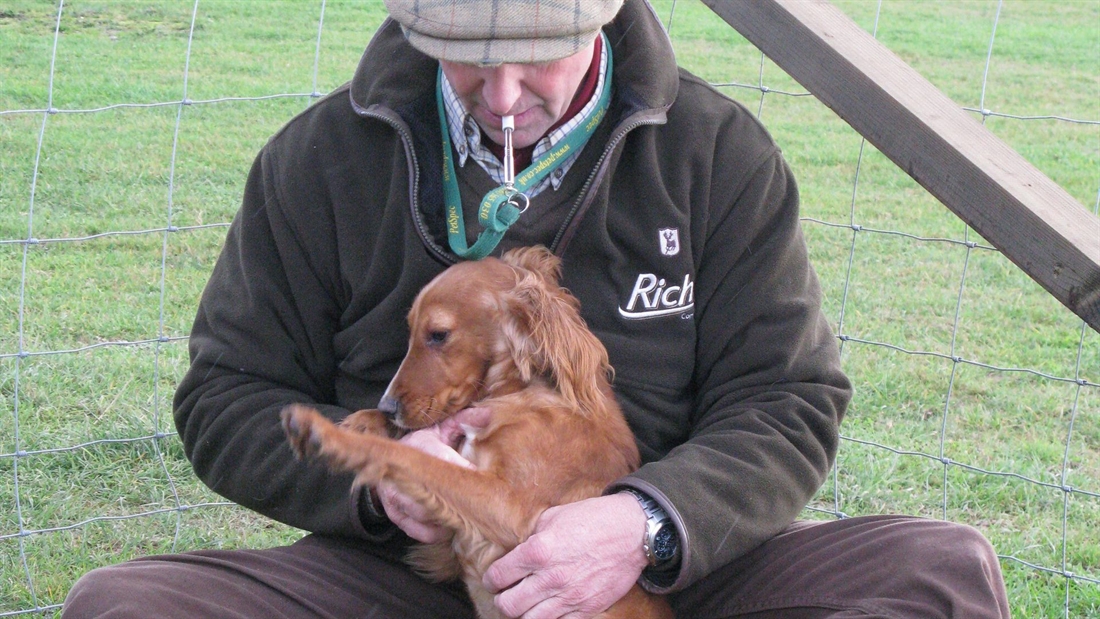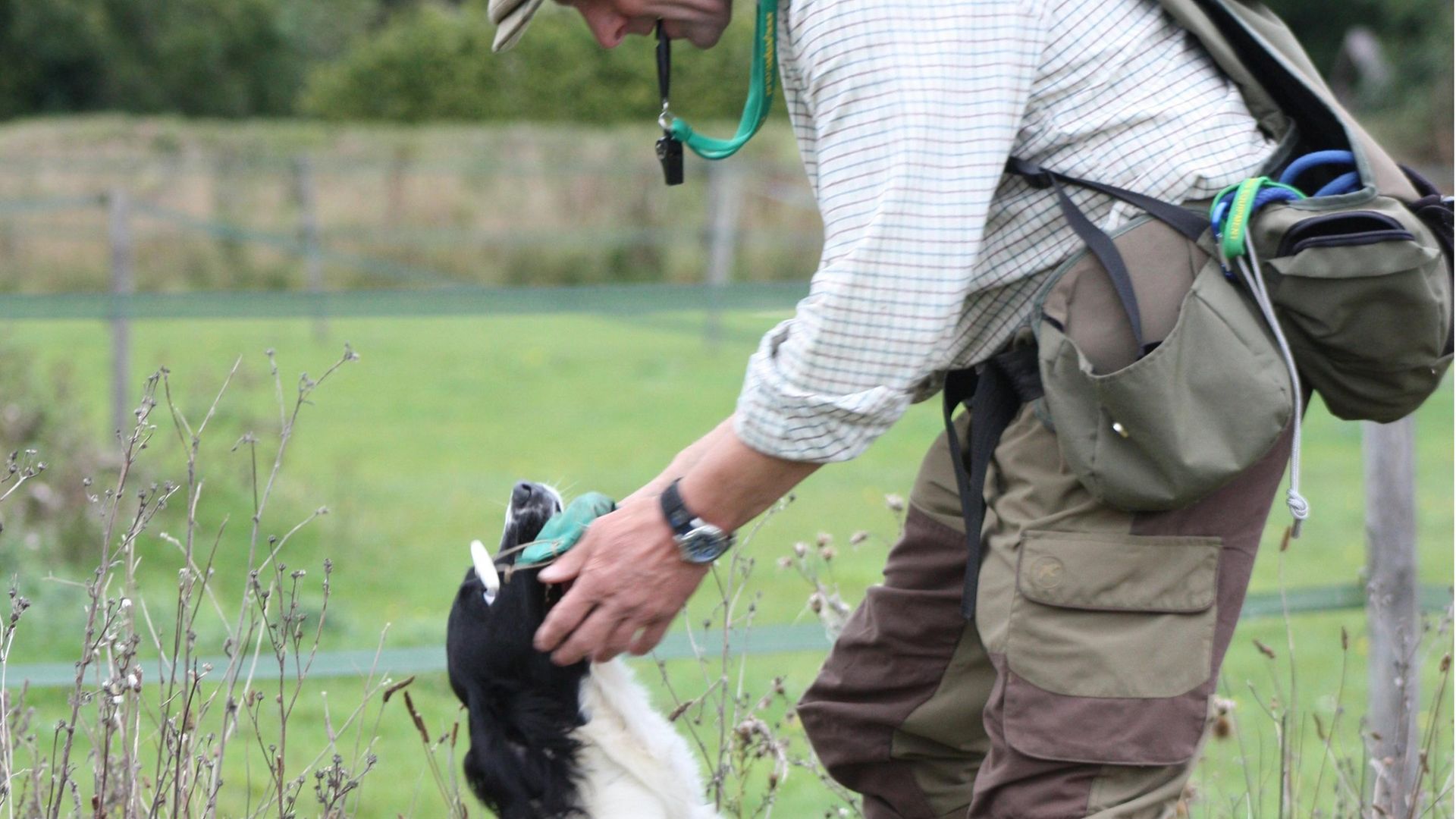Building a partnership with your puppy

Developing a fantastic working partnership with your gundog is crucial for success in the field. Howard Kirby gives some pointers when starting off training with your new puppy
Last month, I looked at the subject of food treat management systems (FTMS), the importance of the preparation and ‘skill set’ that a dog trainer needs, along with thoughts about partnership, and how we might develop it. This month, I’d like to continue with some further thoughts and ideas on these subjects.
Co-operation, teamwork and partnerships can bring huge benefits to all aspects of business, day-to-day life, sport and gundog work. When you watch a dog and handler that work as a partnership, it’s a truly beautiful thing (at least for gundog junkies like us). Months, sometimes years, of carefully considered training and mutual understanding will be layered up behind this magical performance.
The bit that fascinates me is the fluidity of this magical partnership. The performance we witnessed in the previous paragraph was a moment in time. Partnerships evolve and change, sometimes for the better and sometimes for worse. If you recognise, understand and can pre-empt these oncoming changes, then as ‘the grown-ups’ in a gundog partnership, we can be flexible and adapt to head off any problems.
As our dogs mature, they inevitably gain experience, confidence and knowledge. This often leads to the once most willing, obedient and compliant dogs suddenly wanting to do things their way. You’ll notice a new desire to become ‘self-employed’. Some of the business owners amongst you will have seen this pattern of behaviour in the apprentices that you have painstakingly cultivated to partner in your business. It is what it is, and can be anticipated.
Armed with this expectation my advice is to ensure you ‘stay on top’ of the tiniest of cracks that you see start to appear in your trained dog’s performance. With some high-powered dogs, if you give them an inch, they’ll take a mile. It’s important this doesn’t develop into a power struggle, more that you keep on convincing the dog that you do know best.
Establishing a partnership with your gundog puppy
Whilst establishing basic obedience using food treats, and forming the foundation of that partnership, it’s important that the puppy is taught how to gain food rewards by offering a recall, sit, stay and ‘at heel’. The trainer’s job is to engineer the behaviour, and in the case of all those listed above this is done by placing a food reward between your thumb and forefinger and offering a quick reward as soon as the dog has achieved the action. Very gradually, we can increase the timeframe or distance that the pup needs to offer or show each behaviour in order to gain a reward.
Unwanted behaviour, including disinterest in the handler, jumping up or barking must be ignored. Simply turn and walk away, showing your back to the puppy. By talking, shouting and giving the puppy eye contact, you are inadvertently giving her the attention and reward that she seeks. However, the instant that the puppy offers a desirable behaviour, this must be ‘marked’, or acknowledged, with a “good” or a click from a clicker and the food reward given to the dog. The dog will learn through experimentation and develop learned strategy to gain the reward.
(By the way, I personally do not use clickers in group dog training, but I do encourage handlers to study the use of clickers as it can help broaden your knowledge. Understanding clicker work will promote one’s understanding of timing when training dogs.)
All of the techniques and behaviour development listed above require the dog to bring itself to you; it will need to sit and quietly look at your face. Developing these behaviours will be the beginnings of the relationship and partnership that we are aiming for.
Early gundog dummy work
As we endeavour to develop the retrieving aspects of gundog work, it presents us with endless opportunities to further develop a dog’s interest and desire to work with and ‘partner up’ with its trainer. Assuming you school the dog to understand that retrieves start, stop and finish by working with you, highly driven dogs will ‘sell their souls’ to be around you.
The marked retrieve is the staple diet of a good quality shooting dog. In your rush to transform your dog into an all-singing, all-dancing precision guided missile, don’t overlook the essential need for a dog that is more of a self-guided heat-seeking weapon. Gun sense and an excellent ability to mark the fall of a shot bird are priceless skills in a rough shooting retrieving dog.
Of course, this element of retrieving requires that we develop a level of understanding that encourages and promotes independent thinking in the dog. Don’t let that worry you because it is the handler that decides when, or if, the retrieve is to be made. If taught correctly, your dog will always look like it’s about to ‘run in’ from the moment the shot is fired. Well-delivered training will leave the dog with a thorough understanding that it is to remain steady until commanded to do otherwise. Having spent a sporting career playing sports that often leave you physically damaged (judo and eventing), having a dog that looks like it’s going to ‘run in’ is as close as I get to living on the edge these days!
As an aside, having an intensely competitive nature is something that I often wish would leave me. On reflection, as a young man it helped to motivate me, but age and subsequently experience has shown me that this can frustrate and torment me too. I actually believe that having a high drive can be a negative trait in humans and dogs – it’s all about balance. If there was such a thing as a perfect dog trainer, I also believe that they would be the most likeable and desirable person you could ever wish to be around.
Early directional gundog training
Building the dog’s understanding of directional commands and retrieving skills will encourage the dog to physically and mentally look to you for advice and help when hunting for prey. This will be a recognition in the dog’s mind that you are someone that can assist them to locate and get the retrieve in their mouths more effectively. If you manage to strike the balance, you will have a partnership made in heaven. The dog will willingly stop and take direction from you while also feeling independent enough to crack on and use its hunting prowess to find the bird or dummy. Once again we are talking about a working partnership that is balanced.
If the dog is too reliant on you, it will be looking for help too often, and we call this being ‘over-handled’. On the other hand, if the dog has learnt to be too independent of you, it will be reluctant to stop when asked and will start to do its own thing. In either case, the partnership is probably not working!
Few partnerships are equal, and this will need to be a partnership in which you take the leading role. Lead from the front, make informed and successful decisions, show patience, kindness and offer security, and your dog will be desperate to work and please you. It’s a tall order, I know, but it is so worth it when you finally get that dog participating in those precious days in the field.
As always, enjoy your time with your dogs, have fun and Keeeeep Training.







